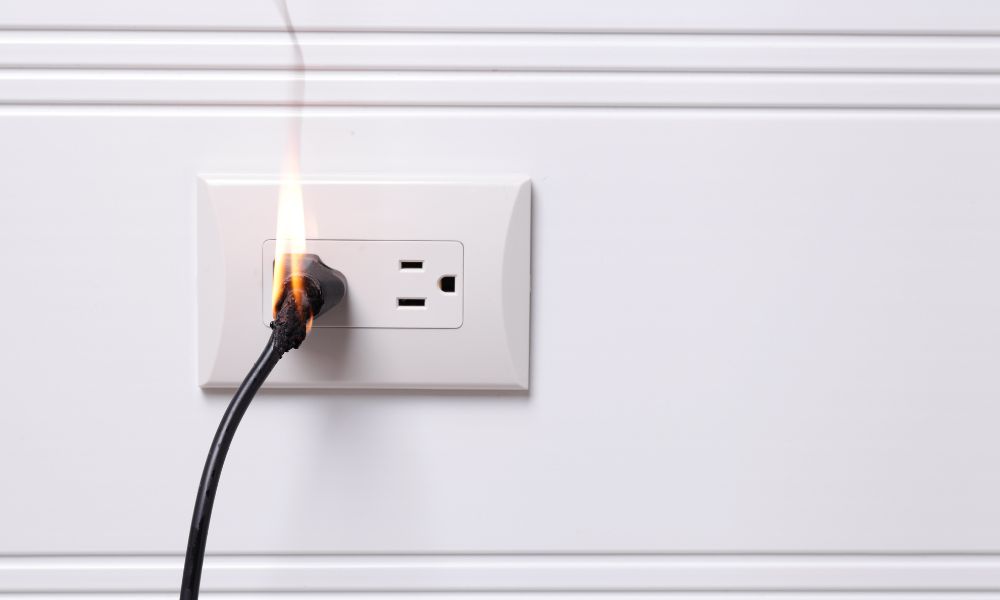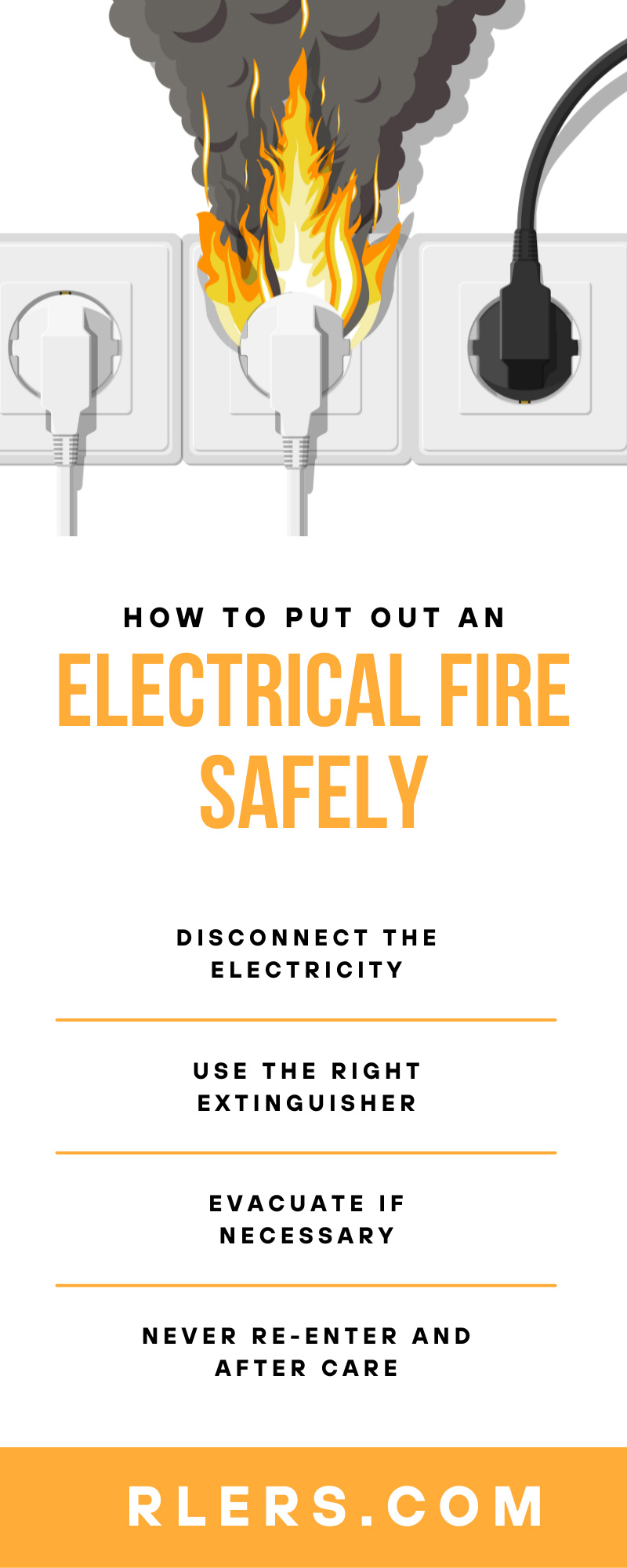
Electrical fires can be unexpected and frightening, posing significant risks to property and personal safety. Understanding how to put out an electrical fire safely can prevent a disaster, protect your assets, and save lives. This guide will help you learn the proper protocols when facing this type of fire in your home.
Understand the Nature of Electrical Fires
Electrical fires typically originate from faulty wiring, overloaded electrical outlets, or defective electrical appliances. Unlike other types of fires, they are fueled by electricity. Furthermore, electrical fires can burn at high temperatures and emit toxic fumes while electrical insulation and other synthetic materials combust.
Recognizing the characteristics of electrical fires is the first step toward safely managing and mitigating such incidents. Approach these fires with safety techniques and extinguishing agents to ensure your safety and the safety of those around you.
Identify Potential Sources of Electrical Fires
Identifying potential sources of electrical fires within your home is a good first step. By pinpointing potential hazards, you can address these risks before they become active threats. Here are some practical ways to identify potential sources:
- Inspect Electrical Cords: Regularly check cords for damage. If they are frayed or cracked, replace them immediately.
- Review Your Appliances: Ensure all appliances are in good working order and do not have loose or damaged wiring. Disconnect and replace anything that gives off an unusual smell or sound during operation.
- Monitor Electrical Outlets: Refrain from overloading outlets with multiple adaptors or power strips. Replace any that appear discolored or emit heat, which could indicate internal damage.
- Schedule Regular Maintenance: Have a qualified electrician inspect your home’s electrical system every few years or immediately if you notice flickering lights, frequent breaker trips, or shocks from electrical devices.
Staying informed and observant of the condition of your home’s electrical environment will safeguard your property and create a safer living space for you and your loved ones.
How To Put Out an Electrical Fire Safely
If you have to face an electrical fire, you must do it correctly to ensure your safety and that of others around you. Here are the steps for extinguishing an electrical fire:
Disconnect the Electricity
If possible, unplug the appliance or device that’s causing the fire. Alternatively, turn off the electrical supply at the circuit breaker or fuse box. This step removes the fire’s fuel source and reduces the risk of electrocution.
Use the Right Extinguisher
Only use a Class C fire extinguisher (in the United States) suitable for electrical fires. The Class C extinguisher contains non-conductive substances suitable for extinguishing an electrical blaze.
Stand at a safe distance and use the PASS technique (pull, aim, squeeze, and sweep.) After pulling the pin, aim the nozzle, squeeze the handle slowly slowly, and sweep the hose from side to side until the fire is out.
Evacuate if Necessary
If the fire does not go out immediately or continues to grow despite your efforts, evacuate the premises immediately. Close the door behind you to contain the fire and call 911 from a safe location.
Never Re-Enter and After Care
Wait for the fire department to arrive, and do not re-enter the building until they have declared it safe. After the fire department has put out the fire, work with a qualified electrician to inspect the affected area and make any necessary repairs before turning the power back on.
Remember, your priority should always be personal safety. Do not attempt to fight a large or rapidly spreading fire. Evacuate immediately and call for professional help.
What Not To Use When Putting Out an Electrical Fire
When confronting an electrical fire, knowing what not to use can stop you from accidentally exacerbating the situation. Never use water to put out an electrical fire. It conducts electricity and can lead to severe electrocution. Also, avoid using generic or multi-purpose fire extinguishers that are not rated for electrical fires; they can be ineffective and might worsen the fire or its consequences.
Substances like baking soda or flour are convenient for smothering flames but can be highly dangerous when misused on a fire. Lastly, do not use blankets or clothing to smother an electrical fire; they can catch fire themselves and will not cut off the fire’s oxygen supply. The key to tackling electrical fires safely is to use the correct extinguisher and methods.
Know When To Call a Professional for Help
At times, an extinguished electrical fire can leave behind hidden dangers that require professional assessment. Knowing the signs that necessitate calling an expert is crucial for your safety and the integrity of your home.
If you notice persistent electrical issues, such as recurrent tripping of circuit breakers or a lingering burnt odor, it’s time to consult a professional electrician. Additionally, visible marks of charring or discoloration on or around outlets and persistent issues after resetting the power are clear indicators that you need expert intervention.
Most importantly, if you see evidence of smoke damage after an electrical fire, work with professionals in smoke damage remediation to ensure a thorough cleanup and avoid potential health risks. When in doubt, it’s always safer to seek the help of an experienced electrician or fire safety expert.
How To Prevent Future Electrical Fires
Preventing future electrical fires in your home is an ongoing process that requires vigilance and a proactive approach to safety. Implementing the following measures can significantly reduce the risk of electrical fires at home:
Conduct Periodic Reviews of Electrical Systems
Just as you would periodically check your smoke detectors, schedule regular inspections of your home’s electrical system. They are particularly important if your home is old or you’ve experienced electrical problems in the past.
Upgrade and Repair as Needed
Outdated wiring, electrical panels, and outlets can all be fire hazards. Consider hiring a licensed electrician to upgrade electrical components that no longer meet building codes or show signs of wear.
Learn About and Adhere to Electrical Safety Practices
Educate yourself and your family about electrical safety. For example, teach children not to insert foreign objects into outlets, and ensure everyone knows what to do in case of an electrical fire.
Integration of Smoke Alarms
Your home should have smoke detectors on every floor and in key areas, such as kitchens and sleeping areas. Regularly test them to ensure they are in working order. They give you early warnings and can save lives in the event of a fire!
Use Surge Protectors
Surge protectors can prevent overheating and reduce the risk of fires caused by voltage spikes, protecting your electronics and home.
Fire safety is predominantly about prevention. By diligently maintaining and respecting your home’s electrical ecosystem, you keep your home and loved ones safe. With this guide on how to put out an electrical fire safely, you can take swift action during such an emergency. Staying informed is the best way to protect your home and loved ones in a fire emergency. If you need professional fire and smoke remediation, reach out to Redline Emergency Solutions. Our expert team members are ready to help you restore your home to its former glory.


